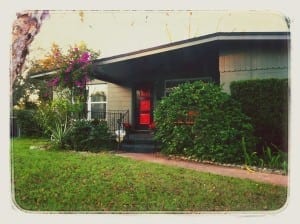Bob's Bloggers
A community of bloggers who live and die to DIY
architectural history
Is Your Home on the Historical Cusp?
By The Craftsman on Jan 28, 2013
Photo by Scott Sidler
I have a lot of friends and clients whose homes fall into something I like to call the Historical Cusp. They don’t live in a house of any particular historical significance, and it’s not quite old enough to have been built by hand with non-standardized materials. But it still maintains some of the characteristics I love so much about historic homes.
Most of these homes were built from about 1945 to 1960, and they represent a large portion of our housing stock in America. They aren’t the famous Craftsman Bungalows of the 1920s or the grandiose painted-lady Queen Annes, but they are just as important. These homes mark a very distinct time in our history.
A Cusp Home
The time after WWII was one of extreme change in the way homes were built, and these houses illustrate that very clearly. Some builders embraced the new materials and techniques that were coming into the mainstream, whereas others fought the change with every fiber in their being. And yet still others experimented by mixing the old and new together into these “historical hybrids.”
Mass production had entered the home building industry, and the changes were evident. Homes were built faster and faster, sometimes with questionable integrity and sometimes with brilliant new innovation.
Historical Cusp Homes defy the term “standard.” It was a time of experimentation; Americans weren’t scared of trying new and untested ideas.
Some of the Details in a Cusp Home
• Plaster slowly gave way to drywall – Some homes were still traditional 3-coat plaster, but many were a combination of drywall and plaster called “rock-lath.” The house would have drywall installed and a veneer coat of plaster would be installed over top. This was faster and cheaper, and helped people get used to the idea of drywall as a wall covering. During this time drywall was viewed as an inferior product, and rightly so. If you saw a drywalled home, the thought was, “Oh, they must not be able to afford plaster walls.”
• Standardized lumber sizes came into being – Up until 1965, lumber sizes were not standardized across America. Some mills produced 2×4s that were 1 1/2″x3 1/2″, while some made actual 2x4s and some had other measurements. After 1965, the lumber industry standardized lumber sizes across the country into what we still have today and solved the problem of inconsistencies.
• Aluminum was king - Until the 1880s, aluminum was so difficult to obtain that is was valued more than gold! In the late 1880s, a new process made aluminum production much more affordable. And so when copper prices spiked in the late 1950s, aluminum was poised to replace it as an affordable wiring choice for homes. Unfortunately, it wasn’t as well-suited as copper and has been the cause of a multitude of house fires due to its tendency to overheat.
• Wood floors were still holding sway – In a Historical Cusp Home wood floors were still the standard, though their expense was on the rise and wood quality was on the wane. It wasn’t until the 1960s that wall-to-wall carpeting or tile became popular.
• Windows get a makeover – The wood window had been the only option besides stained glass since almost the beginning of time. And now windows were changing dramatically. Aluminum units were available with new spring tension balances. Gone were the rope-and-pulley systems that had been the standard for hundreds of years. Many of these units were problematic to say the least, but it was a new technology in its infancy and we were experimenting. The variety of sash balances I’ve come across in ‘Cusp’ homes is extraordinary!
Though these homes may fall short in their execution at times, they are just as precious as the homes they followed. They are unique. Situated just outside the first-rung neighborhoods, they are a historical buffer between the original neighborhoods and the suburbs.
The cusp streets of Florida are filled with mature landscapes of live oaks, podocarpus, and citrus trees galore. They come in all shapes and sizes, from one-story Ranch styles to vernacular Cottages. And they represent a time of immense prosperity in our country. A time when a TV, an automobile, and a good factory job was all we needed to be successful.
